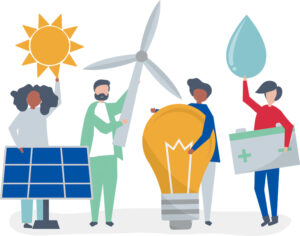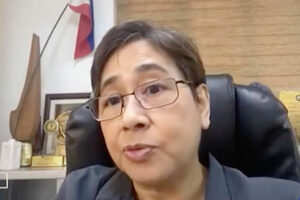Powering a transition towards energy security

The lingering effects of the COVID-19 pandemic, the global recovery effort that came after, and then the sudden Russian invasion of Ukraine in February all led to a full-blown worldwide energy crisis that saw the prices of natural gas rise to record heights and that of oil to a level not seen since the 2008 financial crisis.
Not only did this push the most vulnerable groups and communities towards poverty; the economic growth has slowed to the point where some countries are on the verge of a catastrophic recession due to the rising cost of energy.
According to the International Energy Agency (IEA), many emerging economies — like the Philippines — are experiencing dramatically higher energy import expenditures and fuel shortages, while Europe’s gas supply is particularly vulnerable due to its historic reliance on Russia.
“While today’s energy crisis shares some parallels with the oil shocks of the 1970s, there are important differences. Today’s crisis involves all fossil fuels, while the 1970s price shocks were largely limited to oil at a time when the global economy was much more dependent on oil, and less dependent on gas,” the IEA wrote on its website.
“The entire world economy is much more interlinked than it was 50 years ago, magnifying the impact. That’s why we can refer to this as the first truly global energy crisis.”
The Philippines is experiencing its own energy crunch due to the declining Malampaya natural gas reserves that supply 30% of Luzon’s energy needs.
To become energy independent, the Philippines must make the most of its current fossil fuels and renewable energy sources, but at the current rate of growth, the country will require an additional 43 gigawatts (GW) of capacity just to keep up with demand.
Fortunately, there is a way forward. As more people become averse to fossil fuels due to their role in hastening climate change, many nations including the Philippines are looking to renewable energy as a solution.
The IEA predicts that within the next five years, the global capacity for renewable energy (RE) will virtually quadruple, allowing it to surpass coal as the primary source of electricity generation.
Over the following five years, the IEA analysis sees renewables accounting for more than 90% of global electricity expansion, overtaking coal as the dominant source of electricity before the early years of 2025.
The government of President Ferdinand R. Marcos, Jr. has already committed to the acceleration of the renewable transition to expand development of the country’s domestic energy supply.
To be more specific, by 2030, the administration aims to increase the share of renewable energy in the power mix from its present 22% to 35%, and by 2040, to 50%. Currently, 22% of all electricity generation comes from RE sources.
The Department of Energy (DoE) is working towards a more sustainable energy future by instituting energy efficiency and conservation programs, encouraging the use of clean energy, and encouraging increased investment in renewable sources under the Philippine Energy Plan (EEP) 2020-2040.
One of the most recent big steps the agency has taken toward this goal is allowing for full foreign ownership in the RE industry. Energy Secretary Raphael P.M. Lotilla revised the Internal Rate of Return (IRR) of the Renewable Energy Act of 2008 to permit the use of 100% foreign finance in RE projects. Section 19 of the IRR previously capped foreign investment at 40% of a given RE project.
This June, Mr. Lotilla welcomed local and international investors willing to partner with the country towards its goal.
BlueFloat Energy, a company based out of Spain with a portfolio of offshore wind projects totaling 32.4 GW of projected capacity in countries like Spain, France, Italy, Scotland, Australia, Portugal, and Taiwan, has recently declared its intention to enter the Philippine market by acquiring Wind Energy Service Contracts in four sites in the provinces of Bataan, Batangas, Cagayan and Ilocos, and Southern Mindoro.
BlueFloat’s projected projects in the Philippines add up to 7.6 GW, making them the company’s largest country-specific proposal.
To add 11,600 megawatts (MW) of RE capacity to the country’s energy mix between 2024 and 2026, the DoE has received an overwhelmingly positive response for the Second Round of the Green Energy Auction (GEA-2) Program, with 118 pre-qualified enterprises.
“We are pleased with the positive response from local and foreign investors eyeing our RE potential. We are working on policies that would minimize roadblocks, especially for offshore wind (OSW) installations,” Mr. Lotilla said.
“In the coming weeks, the DoE will issue the policy and administrative framework for the optimal development of OSW resources, including speeding up the approvals of necessary permits. We are working with the concerned government agencies, local government units, and the transmission concessionaire to implement the directives of President Ferdinand Marcos, Jr. under Executive Order (EO) No. 21,” the Secretary added.
EO 21 directs the DoE to publish the policy and administrative framework for the efficient and optimal development of OSW resources in the country within 60 days from its issuance. It aims to harmonize and streamline permitting processes and leasing fees under a whole-of-government approach and fully implement the Energy Virtual One-Stop Shop System to cover all relevant government agencies and bureaus.
Mr. Lotilla added that investments in OSW from foreign companies would bring cutting-edge technology to further develop projects within the Philippines. More importantly, such companies will work with the various coastal host communities in enhancing the local livelihood opportunities and environmental protection.
The government also said that RE projects had taken center stage, with over 80% of investment being approved this year through the Board of Investments.
Through its Energy Utilization Management Bureau, the DoE recorded P6.8 billion worth of energy efficiency investments for the period of 2021-2022.
The data is based on Annual Energy Efficiency and Conservation, and Annual Energy Consumption Reports submitted by the designated establishments, or private entities in the commercial, industrial, transport, power, agriculture, public works, and other sectors identified by the DoE as energy-intensive industries.
Energy-efficiency investments include projects that use energy-efficient technologies and practices, which include new installation, upgrading, or retrofitting specific equipment or devices such as lighting retrofit; automated lighting control system or smart control system; heating, ventilation and air-conditioning (HVAC) upgrades; boiler replacement; and other similar devices or equipment.
The DoE also recorded increased investment in solar PV, variable frequency drives, cogeneration system, district cooling system, pumping system, HVAC system, compressed air system, smart manufacturing system, and building energy management system. — Bjorn Biel M. Beltran




